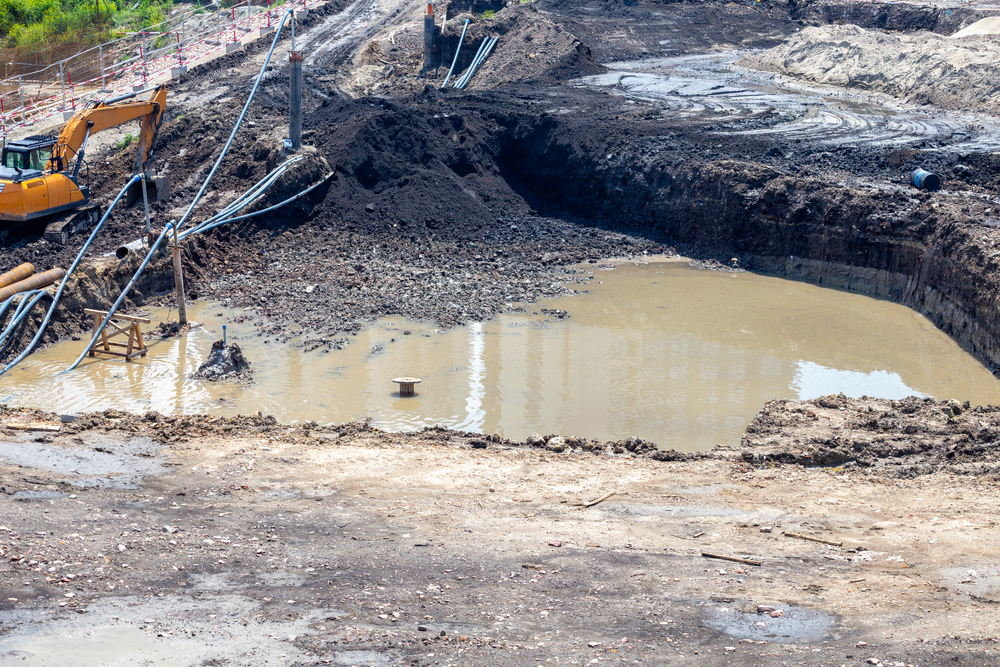

There are several specific approaches that are often utilized within the field of stormwater management and SWPPP, and one of the most frequent and important is dewatering. Groundwater can negatively impact construction sites in several ways, and dewatering is used to help remedy such concerns - but how do you go about handling dewatering needs in rocky terrain settings, which are quite common around Utah?
At Silver Leaf SWPPP, we're happy to offer the very best SWPPP solutions across Utah, including dewatering services for any construction site and terrain. Here are some of the challenges in dewatering that can be presented by rocky terrain around Utah, plus some general approaches for handling groundwater properly despite any of these challenges.
For those who may not be familiar, dewatering is the process of removing or draining water from a construction site. This is typically done to facilitate construction work and ensure that the project can be completed safely and on schedule.
One of the chief purposes of dewatering is to prevent water from saturating the soil or excavated area, which can cause stability issues and hinder construction progress. In addition, dewatering helps to prevent groundwater seepage into nearby structures, which can lead to damage and potential legal liabilities.
Rocky terrain presents a unique set of challenges for dewatering projects. Here are some of the main difficulties that may arise when dewatering in rocky areas:
Because of the uneven surface and irregularities in rocky terrain, achieving proper drainage can be a challenge. This is especially true when the rock formations are jagged or have varying permeability. In these cases, it may be necessary to carefully select dewatering techniques that can adapt to the specific conditions of the site.
Rocky terrain often requires heavy machinery for excavation and drilling, which adds an extra layer of complexity to dewatering projects. Specialized equipment may be needed to effectively remove water from crevices or gaps between rocks, while also avoiding potential damage to the surrounding structures.
Many common dewatering systems, such as wellpoints for instance, can sometimes be difficult to install in rocky terrain. These systems require a certain amount of water flow and pressure to operate effectively, which can be hard to achieve in areas with solid rock formations.
In some cases, rocky ground might even necessitate the use of deep well systems. These dewatering systems involve drilling deep boreholes into the ground, which can be a time-consuming and expensive process. However, they are often the only viable solution for draining large areas with extensive rock formations.
One of the most important facets of dealing with rocky terrain for your dewatering needs is selecting the proper methods. Not all dewatering techniques are ideal for rocky ground, and choosing the wrong one could lead to failure or excessive costs.
When facing a project with significant rock formations, it is crucial to conduct thorough site investigations and consult with experienced dewatering experts. This will help determine the best method for your specific site conditions, such as the depth of rocks, type of rock, and groundwater levels.
There are several types of dewatering methods that can be used in rocky terrain, including wellpoints, deep wells, ejector wells, sump pumping systems, and eductor wells. Each method has its own advantages and disadvantages, and the best one to use will depend on the specific site conditions.
Wellpoints, for instance, are suitable for shallow depths and can be installed quickly, but may not be effective in highly permeable rock formations. Deep wells, on the other hand, can handle deeper dewatering requirements, but are more expensive and time-consuming to install.
Ejector wells use a vacuum system to remove water from permeable soil or rock, making them ideal for areas with high groundwater levels. Sump pumping systems work well in conjunction with other methods and are often used as a backup to prevent flooding during heavy rain.
The concept of managing dewatering needs despite rocky terrain that's common around Utah is a perfect example of why working with professional stormwater management experts is so important. They have the experience, knowledge and tools to assess your specific site needs and create a customized dewatering plan that meets all necessary regulations and effectively manages any potential challenges.
Not only can professional services save you time and hassle by handling all aspects of the dewatering process, but they also ensure that it is done correctly and efficiently. This can ultimately save you money in the long run by avoiding costly mistakes or delays due to improper dewatering methods.
At Silver Leaf SWPPP, we're proud to offer high-quality dewatering and other SWPPP services to clients around Utah. Contact us today to learn more about how we can help with your construction project's dewatering needs, including assistance with any rocky terrain present on your site